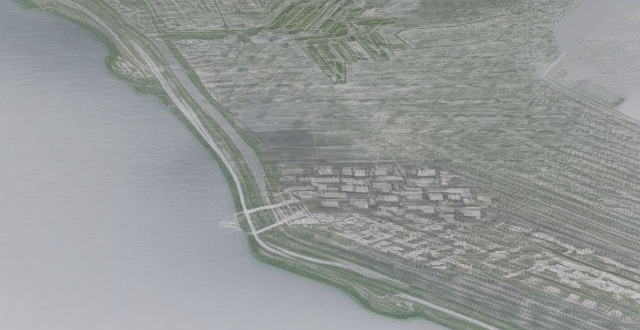The article discusses the factors that contribute to a building's earthquake resistance and identifies certain types of buildings that are more resistant to earthquakes. The key factors contributing to earthquake resistance include structural design, materials used, foundation type, age, and maintenance. Steel-framed buildings, reinforced concrete buildings, wood-framed buildings, and prefabricated buildings are all examples of structures that can be designed and constructed with earthquake resistance in mind. Proper construction techniques and advanced engineering techniques such as base isolation or energy dissipation devices can further enhance the resilience of these buildings.

Are Certain Types of Buildings More Resistant to Earthquakes Than Others?
Earthquakes can be devastating natural disasters, causing significant damage to buildings and infrastructure. However, not all buildings are equally vulnerable to earthquakes. In fact, certain types of buildings are designed to be more resistant to seismic activity than others. In this article, we will explore the factors that contribute to a building's earthquake resistance and discuss which types of buildings tend to fare better in earthquakes.
Key Factors Contributing to Earthquake Resistance
There are several key factors that contribute to a building's ability to withstand an earthquake:
- Structural Design: The design of a building's structure is critical for its ability to resist earthquakes. Buildings with flexible, ductile designs are more likely to absorb the energy from an earthquake without collapsing.
- Materials Used: The materials used in construction also play a role in earthquake resistance. Strong, lightweight materials such as steel or reinforced concrete can help a building withstand seismic forces.
- Foundation Type: The type of foundation a building has can also impact its ability to resist earthquakes. Deep, solid foundations are generally more resistant to seismic activity than shallow or unstable ones.
- Age and Maintenance: Older buildings may not have been designed with modern earthquake-resistant techniques and may require retrofitting or strengthening to improve their resilience. Proper maintenance is also crucial for ensuring that a building remains structurally sound over time.
Types of Buildings More Resistant to Earthquakes
Now that we have discussed the key factors contributing to earthquake resistance, let's take a look at some specific types of buildings that tend to be more resistant to earthquakes:
Steel-Framed Buildings
Steel-framed buildings are known for their flexibility and ductility, making them well-suited for withstanding earthquakes. These buildings typically have a strong, lightweight frame made of steel beams and columns that can bend without breaking under seismic forces. Additionally, steel-framed buildings often use dampers or other energy dissipation devices to further reduce the impact of earthquakes on the structure.
Reinforced Concrete Buildings
Reinforced concrete buildings are another type of structure that tends to fare well in earthquakes. These buildings use a combination of concrete and steel reinforcement bars to create a strong, rigid structure that can withstand seismic forces. The use of shear walls or other bracing systems can also help to improve the overall stability of reinforced concrete buildings during an earthquake.
Wood-Framed Buildings
While wood-framed buildings may not be as inherently strong as steel-framed or reinforced concrete structures, they can still be designed to be resistant to earthquakes through proper construction techniques. For example, using plywood sheathing and hold-down devices can help to secure the building's roof and prevent it from lifting off during an earthquake. Additionally, ensuring that the building is properly anchored to its foundation can help to reduce the risk of collapse.
Prefabricated Buildings
Prefabricated buildings, which are constructed off-site and then assembled on location, can also be designed with earthquake resistance in mind. These buildings often use lightweight materials and modular components that can be easily replaced if damaged by an earthquake. Additionally, prefabricated buildings may incorporate advanced engineering techniques such as base isolation or energy dissipation devices to further enhance their resilience.
Conclusion
In conclusion, while no building can be completely immune to earthquakes, certain types of buildings are designed to be more resistant to seismic activity than others. Steel-framed, reinforced concrete, wood-framed, and prefabricated buildings are all examples of structures that can be designed and constructed with earthquake resistance in mind. By taking into account factors such as structural design, materials used, foundation type, age, and maintenance, architects and engineers can create buildings that are better equipped to withstand the forces of nature.